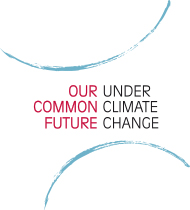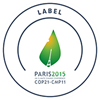The El Ni´┐Żo ´┐Ż Southern Oscillation (ENSO) is the dominant mode of interannual climate variability on Earth, with worldwide impacts. Because ENSO involves a complex interplay of ocean and atmospheric processes, accurately modelling this climate phenomenon with coupled General Circulation Models (CGCMs), and understanding and anticipating its behaviour in a warming climate, still pose major challenges. Over the past three decades, new theoretical insights, together with longer and more comprehensive observations, increased computer power, and improved physical parameterizations of subgrid-scale processes, have resulted in better understanding of ENSO dynamics and much improved simulations of ENSO in CGCMs.
While many of the basic properties of ENSO are now well understood and simulated, the community is still faced with the problem of addressing its detailed mechanisms and impacts (e.g. extremes, inter-event diversity, physical feedbacks, asymmetries between El Ni´┐Żo and La Ni´┐Ża), their statistical robustness in light of short observational records, and how these evolve in a decadally- to centennially-varying background climate. Metrics to evaluate ENSO and the tropical Pacific in models need to be designed. In addition, a review of new developments ´┐Ż including recent research on extreme El Ni´┐Żo events, ENSO predictability, and ENSO non-linearity ´┐Ż is needed to consolidate existing understanding and plan for future research, including the design of a future Tropical Pacific Observation System (TPOS).
The World Climate Research Program (WCRP) has long recognised the central importance of understanding and predicting ENSO and this workshop is the first to be organised under the new CLIVAR ENSO Research Focus. Beyond addressing CLIVAR goals, this workshop will contribute to several of WCRP´┐Żs Grand Challenges and discuss research priorities as well as topics for future workshops.
The specific goals of the workshop are to review, discuss and report on 1) The current mechanistic understanding of ENSO, particularly in the context of a warming climate, 2) Observations of the tropical Pacific, and metrics to evaluate and intercompare models, 3) The role of the tropical Pacific in global-scale decadal variability including the recent hiatus in global warming and 4) Anticipated changes in ENSO properties over the coming decades.



